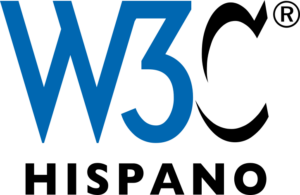Can you imagine a world where organisations can solve complex problems faster and more efficiently? The ARQA network makes this possible thanks to quantum computing, an emerging technology with enormous potential to revolutionise sectors such as energy, security and industry.
ARQA: The science-business nexus
ARQA is the alliance of technology centres for innovation in quantum computing applications for businesses, created as a CERVERA Network of Excellence. To this end, the ARQA network proposes the definition of a technological roadmap to solve highly complex practical problems faced by the Spanish (and international) industrial sector related to its production model, by analysing the feasibility and efficiency of applying quantum computing techniques.
This network, coordinated by the CTIC technology centre, acts as a bridge between cutting-edge research in quantum computing and the real needs of companies. Its objective is clear: to transfer this disruptive technology to the Spanish industrial sector and generate a real impact on the economy.
Three quantum solutions to three challenges
The ARQA network focuses on three key areas where quantum computing can make a difference:
- Classification: Streamlining the classification of large amounts of data, which is critical for industries such as banking and e-commerce.
- Optimisation: Finding more efficient solutions to complex problems, such as energy network management or logistics planning.
- Generative AI: opening up new possibilities in artificial intelligence, such as the development of personalised materials or medicines.
Hands-on demonstrators for real understanding
ARQA goes beyond theory. The network will create three demonstrators in sectors such as energy, security and territory. These case studies, which are easy for businesses to understand, will show the real potential of quantum computing and facilitate its adoption.
CTIC: a leader in quantum computing
The CTIC, coordinator of the ARQA network, is a pioneering technology centre in this field. It has a research line dedicated to quantum computing since 2018 and has developed QUTE, the most powerful quantum emulator in Spain.
ARQA is a network made up of three technology centres: CTIC, as coordinator and leader of the initiative; EURECAT (Technological Centre of Catalonia) and ITG (Technical Institute of Galicia); three entities that have positioned themselves with structured and stable R&D lines in a very emerging technological field with great potential, such as quantum computing, and that are characterised by their common commitment to effective transfer of this technology to companies.
Eurecat is the leading technology centre in Catalonia, providing innovative technological solutions to companies to improve their competitiveness and contribute to the well-being of society.
ITG, Instituto Tecnológico de Galicia, is a Galician technology centre, recognised as a national technology centre. Its main mission is to increase the competitiveness of companies, institutions and society in general through research, development and technological innovation (R+D+i) and the application of differentiated technologies.
With ARQA, the CTIC renews an alliance with two centres, EURECAT and ITG, with which it has collaborated in previous Cervera consortia, specifically in the Cervera AI4ES and CEL.IA networks, both in the field of Artificial Intelligence technologies.
This initiative is made possible thanks to the funding from the Ministry of Science, Innovation and Universities, through the CDTI.
ARQA: A unique opportunity for companies
The ARQA network offers companies a unique opportunity to
- Access the latest quantum computing technologies.
- Explore how this technology can help them solve their challenges.
- Collaborate with experts in the field and develop innovative solutions.
The programme's ultimate goal is to transfer quantum computing to industry, which will be achieved through various technology dissemination activities. Are you taking the leap into the future with quantum computing?



